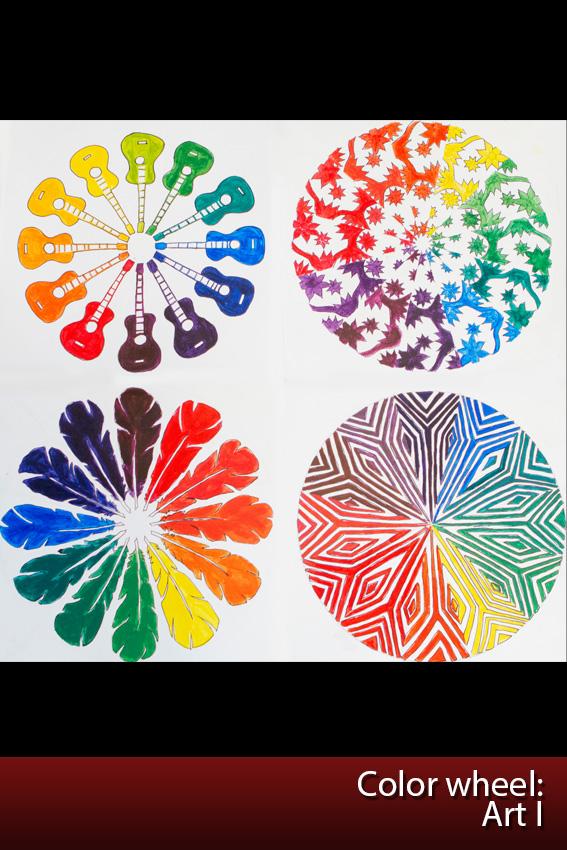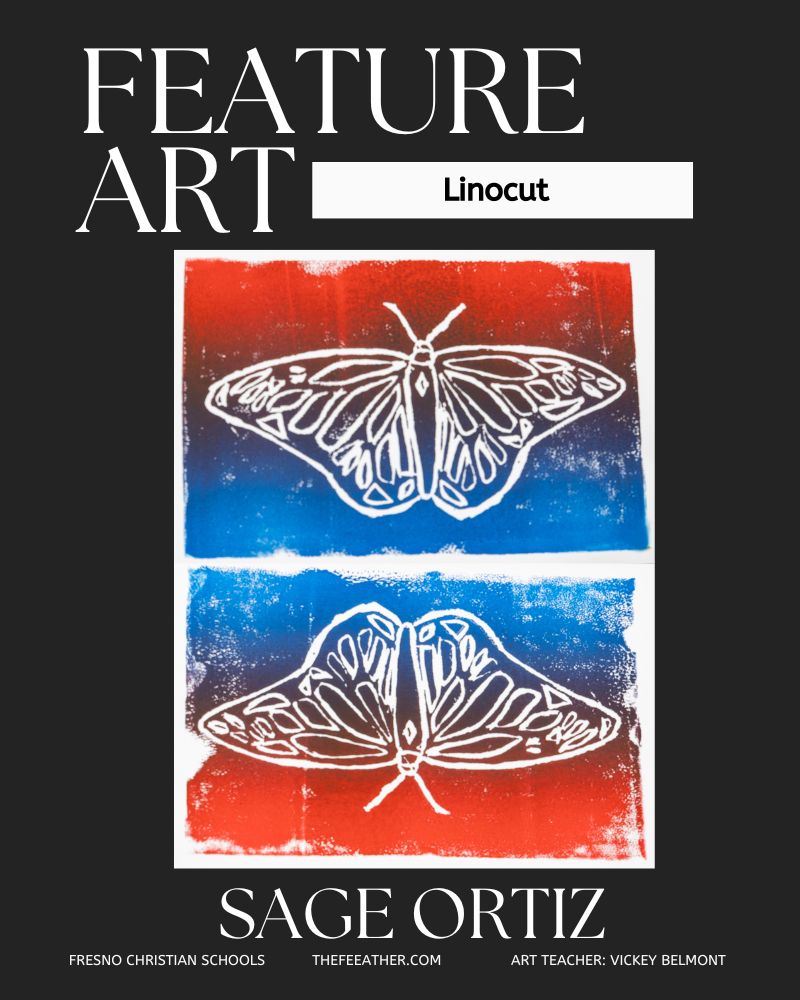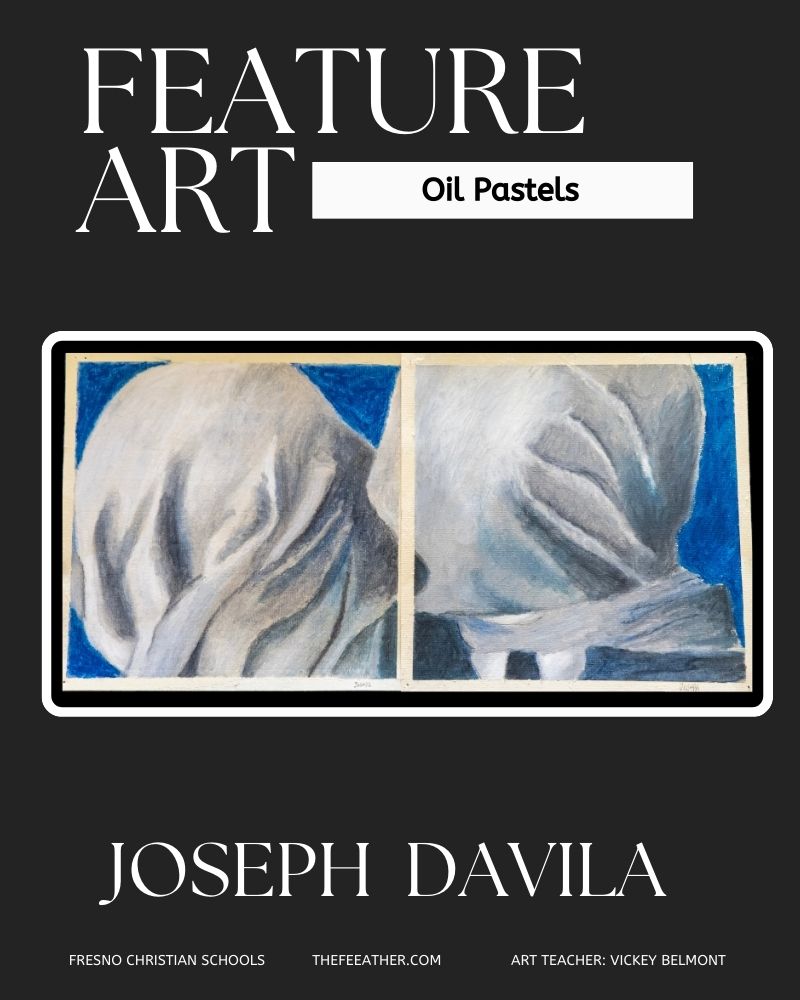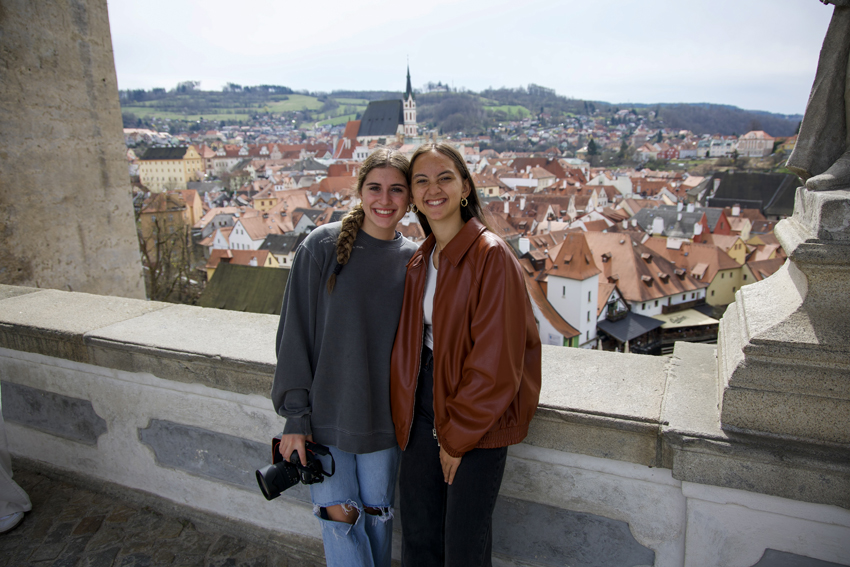The Feather Featured Art series is chosen by art teacher Vickey Belmont from her classes and/or independent art students. Belmont picks the best work during current units and encourages students to participate in these occasional posts. Other students are encouraged to submit art pieces as well. Please contact the editors directly or via adviser Kori James for submissions.
Description by art teacher Vickey Belmont:
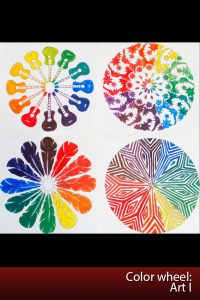
The beginning of the second semester color is introduced to the art class in the color theory unit. This unit shows the students how all colors are mixed from three primary colors, red, yellow and blue. They also learn how to use the color wheel to find complementary colors, triadic color, color schemes and how warm and cool colors affect our moods and how we feel.
The color wheel is an important tool used by artists, you may not know other professions such as interior designers, floral designers, fashion designers, painters, and bakers also use a color wheel. These professions rely on choosing and creating the perfect color for their needs.
Art 1 students are asked to create a color wheel displaying primary, secondary and tertiary colors. Primary colors are the basis of all other colors, mixing them in a ratio of 1:1 will create secondary colors, mixing a secondary color with a primary color creates the tertiary colors. This site shows you a color wheel, a few color schemes and color theory.
Students find a design either a repeating pattern or an overall design and draw it on their color wheel. They start with the primary colors and proceed to mix the remaining colors to create a finished wheel. This site gives an example of how to mix colors together.
I let the students choose the design that they feel comfortable with, it’s great when they stretch themselves and try to draw something a little more difficult but this project is not about the design, it’s learning how to mix colors and where they belong on the color wheel.
Junior students Makayla Davila, Addison Samarin, sophomore Lucia Sigmond and freshman Savannah Cisneros finished their color wheels using very different designs in Art I class. When I introduce this unit on color theory, most first-year art students are very intimidated by paint, as we move through the unit and they finish up the final project, a self portrait.
Their self doubt is replaced by a little bit of pride in a job well done.
Samarin, who is taking an art class in high school for the first time, uses a guitar in the top left art wheel design illustration.
“This project and art classes help with skills that I think could be super useful in my actual life,” Samarin said. “The color wheel can be seen everywhere you go, and can be used in so many everyday activities. For example, if you want to decorate your room, the color wheel can guide you towards colors that will compliment each other and look good together.”
After attending Bullard High for her first two years of high school, Samarin is new to Fresno Christian this year. She said she changed schools because Fresno Christian was educating in-person, and switching to a Christian education was also a huge deciding factor. Her art class has inspired her.
This project and art classes help with skills that I think could be super useful in my actual life. The color wheel can be seen everywhere you go, and can be used in so many everyday activities. For example, if you want to decorate your room, the color wheel can guide you towards colors that will compliment each other and look good together. — Junior Addison Samarin
Belmont said the students featured are some of the best examples that were turned in this year, their artistic abilities vary but each produced beautiful examples of the project. First year students will say, “I can’t do that” and each time I tell them that artistic abilities can be acquired.
“I also think that this project was fun because the idea of a color wheel is simple,” Samarin continued, “but it allows for some creativity as far as what design to do or how you want to use your colors. I enjoyed this project because the skills learned are practical for everyday life, and it also had a creative element in choosing how you want to use the colors on the page.”
Davila’s color wheel is the design on the bottom right and she believes this unit has helped her with other art skills.
“My art project the color wheel was the most time consuming project I’ve done so far,” Davila said. “My design took a while to draw and I had to have a lot of patience to paint every tiny little detail. I think it helped my painting skills and just to have patience with art. This was one of my favorite projects because it’s the most colorful and in my opinion the most throughout painting I’ve ever done in this class. I am very glad I took this class and I can’t wait to do more painting and drawings in the future!
It just takes practice, if they practice putting pencil to paper they can become artistic. Some take this advice and by the end of the year they are producing works of art that they are extremely proud to show off.
For a previous art post, read Feature Art No. 4, 2020-21: Scratchboard. For more Feather articles, read Journalists continue storytelling despite Covid-19 restrictions and Editorial: Financial strategies in HS avoid later economic woes.

